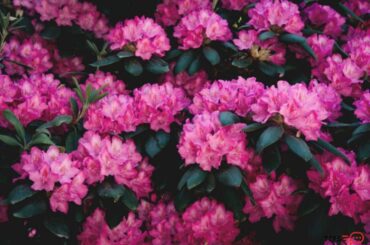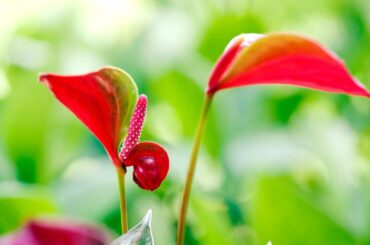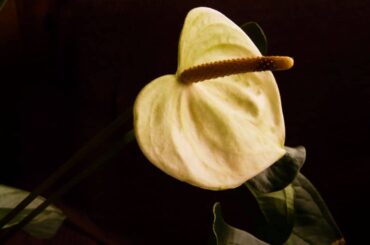You should not place your Anthurium in a much darker area or in direct sunlight. Why is that? Continue reading to learn more about Anthurium light requirements. Anthuriums are a popular and breathtakingly beautiful flowering plant that can add a touch of elegance to your home.
Some anthurium varieties are grown for their beautiful foliage, whilst some are grown for their gorgeous, vivid flowers. But, at the same time, anthuriums are recognized as fastidious plants to grow.

To make anthuriums happy and healthy, the correct provision of the factors that they crave is essential. If the plant receives these factors in the right amounts, it will live longer and produce spectacular flowers all year round. One of these factors is light. The plant should be exposed to the right amount of sunlight not only for healthy growth but also to preserve the beauty of the foliage and blooms.
Anthurium light requirements : How much do they need?
To be specific, anthuriums grow best under bright indirect light. This means that the light is just enough to make a blurry, indistinct shadow and that sunlight doesn’t pass directly to the plant; instead, it bounces off something else before reaching the plant. Anthuriums adore light, but they cannot thrive in direct sunlight. The plants will be burned or become dehydrated once they are exposed to too much light.
Anthuriums require sufficient illumination to thrive. The way it gains light to illuminate is critical. Sometimes, it will be quite tricky to provide the exact intensity of light for anthuriums. Anthuriums are native to rainforests. There, they grow under a dense canopy. After filtering by the canopy, sunlight passes to anthuriums. In this sense, we are used to growing anthuriums under a shade.
If you notice your plant is struggling to grow or bloom, perhaps it may be due to not receiving enough light. Though the plant might survive under low light, it will not perform its best. In response to such conditions, plants will show growth stunts, less blooming, or odd coloration of flowers.
Direct vs. Indirect Sunlight
Direct sunlight refers to the highest exposure of the plant to the sun. Here, sunbeams strike right onto the plants without filtering through any barrier. In other words, there is no obstruction between the sun and the plant. Under direct sunlight, nearly all the energy of the sun rays is absorbed by the plant.
You can see a dark, clear, and distinct shadow of the plant under direct sunlight. When it comes to indirect sunlight, it means that sun rays reach the plant after passing through a barrier or after bouncing off another surface. The plant does not receive direct sunlight. The plant, on the other hand, is not in the dark. Unlike direct light, here you can see multiple, faint, and indistinct shadows of your plant.
Direction of Exposure
We do not receive the same intensity of light throughout the day. In the morning, the sun is gentler while it is so harsh in the daytime. In the evening, light intensity is very low. East light exposure makes anthuriums happy, and it is best for plants. But why not others?
Light exposure is recommended for anthuriums. In east light exposure, plants get a gentle bright light in the morning. Here, the light intensity is just right for the plants. Plants benefit from light exposure to the east. Southern light exposure is harmful to anthuriums. In the daytime, the ambient temperature is high and the sun rays are too strong and harsh.
So, if they directly shine on the plants, the foliage will be scorched and the flowers will turn their colors like they are in a fire! As a result, you should keep your anthurium plants away from direct sunlight. As with the southern exposure, western light exposure is also not recommended for anthuriums.
In the evening, the ambient environmental temperature is high, the brightness of the light is low, and it is not sufficient enough for healthy plant growth. So, the plant will not be satisfied with the western light exposure.
In the case of north light exposure, plants always get indirect light. Though anthuriums need indirect light, you won’t fulfill the light requirement of anthuriums with north exposure to light.
However, north exposure might be okay during the summer due to the abundance of bright light.

Can Anthuriums Grow in Low Light?
Actually, anthuriums are light-loving plants. The plants will live in low light. But you cannot expect the best once they are in low light. If you keep your indoor anthuriums far away from a window, they will receive low light. If the plants are outdoors and under heavy shade, they will get very little light. If you notice that your anthuriums are not blooming much, turning flowers to green, or stunting the growth, they are probably suffering from light deficiency.
Do Anthuriums Like Bright Light?
Definitely yes. As mentioned earlier, for optimum growth and frequent blooming with vivid shiny flowers, you should provide bright light for anthuriums. The way you provide the bright light is important. Keep in mind that it is not advisable to expose your anthuriums to bright light directly as it can result in dehydrated and scorched plants. Therefore, always go for bright and indirect light for your anthuriums.
Where Do You Place Anthurium?
Light, temperature, and humidity are the three most critical factors that affect the growth and blooming of anthuriums. Anthuriums crave bright and indirect light, high humidity, and mild temperatures. Therefore, for the best performance of the plants, they should be placed where these conditions can be achieved.
Anthuriums are suitable for both indoor and outdoor cultivation. Unlike growing outdoors, you should attentively control the plants’ requirements when they are grown indoors. The location of the plant plays a vital role. With respect to light, anthuriums should be placed near a sunny window to ensure they are receiving enough bright light.
If you think it receives too much light through the window, especially during the daytime, you can use a sheer curtain to filter off the light. The plant will be damaged if it is exposed to too much light. So, you should never keep your plants in dark places or where light intensity is too low. It will definitely make your plant unhappy.
Can Anthurium Live in Artificial Light?
Artificial light can be used for anthuriums where the light intensity is low.
If the room has a little light or if it is a north-facing room that does not receive direct bright light properly, you can expose your anthuriums to artificial light to promote their growth and blooming. In such situations, artificial light provides the light energy required for the plant. LEDs are most commonly used as an artificial light source for most indoor plants, including anthuriums.
Compared with incandescent and fluorescent lights, LEDs are more effective as they use a little energy and heat. However, sunlight is the best as it is more intense than artificial light and is composed of a wide spectrum of different wavelengths. Natural sunlight, on the other hand, has an intensity and nutrient content that can never be reproduced by anything else.

What Window Is Best for Anthurium?
Anthuriums love light. So, if it is indoors, obviously, it should be placed closer to a sunny window. But in which direction should it be placed? For anthuriums, east-oriented windows are ideal. Why? East-facing plants get clement sunlight more than in any other exposure. The intensity and the moderate warmness of the light are most compatible with the anthuriums’ ability to perform their best.
The plants will receive soft direct sunlight in the morning and moderate indirect light later in the day. During the daytime, the plants that are close to the east-facing window will get strong sunlight. It is not a good idea to plant your anthuriums near southern-oriented windows. Nevertheless, if you select a southern-oriented window for your plant, do not keep it very much closer to the window.
It would be preferable if the plant could be placed at least a few feet away from the window. Also, use sheer curtains to filter the light that reaches your plant. Plants that are placed too close to southern-facing windows can be exposed to harsh direct sunlight from sunrise to sunset in the evening.
You should avoid exposing your anthuriums to harsh sunlight as much as possible, as it can cause severe damage to the plant. Remember, too much sun fades the foliage and results in undesirable color changes in anthurium flowers. In the case of anthuriums placed near west-facing windows, they will get direct bright light from the mid-afternoon to the sunset in the evening.
Anthuriums will be scorched and withered once they are exposed to bright direct light for hours. Therefore, placing anthuriums near west-facing windows is also not recommended. North-facing windows are also not suitable for your anthuriums to sit in as they provide a shaded area for plants.
Though the plants get indirect sunlight with north exposure, anthuriums may not receive enough bright light if they are placed in north-facing windows. This will be a serious problem during the winter since the light intensity is low. You should provide supplemental lighting during the winter if you place your anthurium plant near a north-facing window.
Is Anthurium OK in the Bedroom?
You can keep your anthurium plant anywhere you like. But be certain to fulfill their requirements properly. Unlike growing outdoors, you must carefully monitor the plant’s light, temperature, and humidity levels inside the room. Make positive your plant is getting sufficient shiny light. Keep it close to a window ideally near a north-facing one.
If not, you can use a sheer curtain to shield your plant from direct sunlight. Keep in mind that though you increase the brightness in the room to the fullest, it may not equate to the bright sunlight in nature. If your room has been air-conditioned, you have to be careful about the humidity around the plant.
Air conditioners reduce the humidity inside the room. This will be detrimental for anthuriums as they love high humidity levels. Therefore, you can use a humidity tray or humidity sprayer, or you can moisten the plant as necessary to maintain a desired humidity level in the environment. Keep your plant away from the air conditioning unit as it radiates heat that can affect the plant’s health.
Anthuriums perform best at a temperature of around 24 to 28 oC during the daytime and around 15 to 22 oC at night. So, make sure that your room temperature matches this range. Wrapping up Light is a crucial factor that affects the growth of anthuriums. When fulfilling the light requirements of anthuriums, the direction and intensity of light must be considered.
The position of your indoor anthuriums can have a huge impact on their health and development. Always remember that your anthurium craves bright, indirect light. So, whenever you’re selecting a place for it, make sure it receives light with the right intensity in the right direction for a sufficient time of the day.
Read Next : Anthurium Light Requirements ( 5 Minutes Read )





